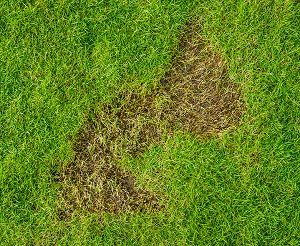 Lawns are a living thing. With the proper lawn care, the right fertilizer, and solid irrigation for those dry months, your lawn should be in good shape. If you’re finding dead spots on your lawn even with all these steps, chances are you’ve got a pest problem. In this blog, we’ll look at the common lawn destroying insects and grubs in New England, and how to discover them.
Lawns are a living thing. With the proper lawn care, the right fertilizer, and solid irrigation for those dry months, your lawn should be in good shape. If you’re finding dead spots on your lawn even with all these steps, chances are you’ve got a pest problem. In this blog, we’ll look at the common lawn destroying insects and grubs in New England, and how to discover them.
Lawn Grubs
One of the most common types of insects is the grubs of Japanese Beetles or June Bugs. These white crescent-shaped larvae can exist safely in your lawn in small amounts, but in larger amounts can overcome and devour your lawn.
Detecting Lawn Grubs
Two signs can help you identify lawn grubs. First is if you saw a lot of Japanese beetles the prior summer. The second is seeing how many grubs there are. Pull up a small foot by foot patch of sod and look underneath. If you spot less than a half-dozen grubs, your lawn can probably support it. If you find more, you need to get them removed.
Leatherjackets
While the adult European Crane Fly is not a threat to your lawn, its offspring are a different story. The wormlike brown larvae known as Leatherjackets can eat your lawn through the spring and summer.
Detecting Leatherjackets
Peel back a portion of your lawn and take a peek at the roots. Just like with the grubs, a small amount isn’t an issue. If you’ve got more than a dozen or so in a square foot, they can pose a hazard to your lawn. It’s important to catch them in the spring if possible: their appetites increase in the summer as they start to reach maturity.
Southern Chinch Bugs
Chinch bugs are very small, with most types not growing about a fifth of an inch and are orange to red with a white band. Since they are hard to spot, detecting them often requires the floatation test.
Detecting Chinch Bugs
Using a tin can or cookie cutter, take a core sample from the affected lawn. Chinch bugs inject a toxin into the roots of grass to make it easier to eat, so check for ground that feels particularly soft or spongy. Take this core and submerge it in a bucket of water and wait several minutes to see if chinch bugs float to the surface. If you see more than 30 of these in a 4 to 6 inch wide sample, it’s time to treat them.
Need help troubleshooting your lawn or treating these lawn pests? Dolan Landscaping can help. Contact us today.